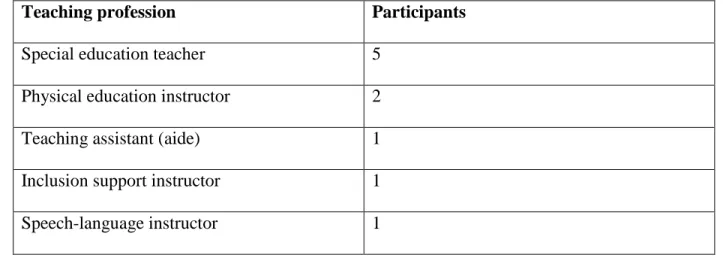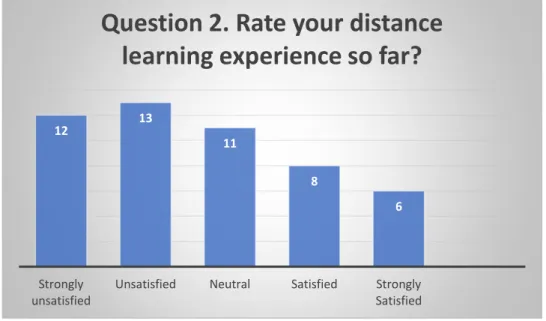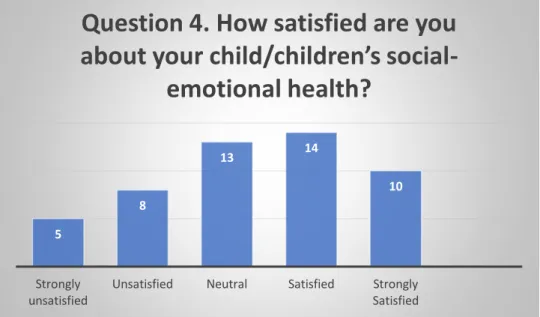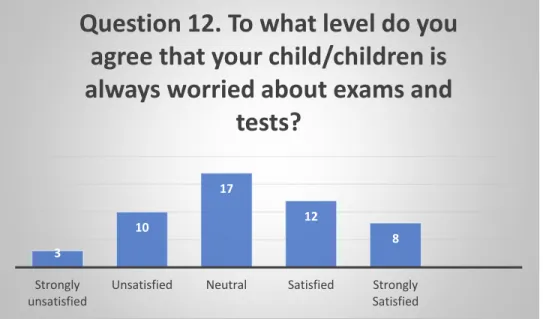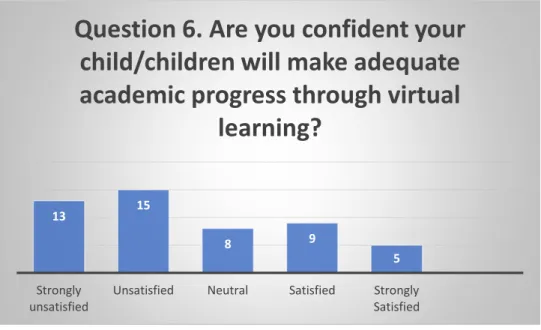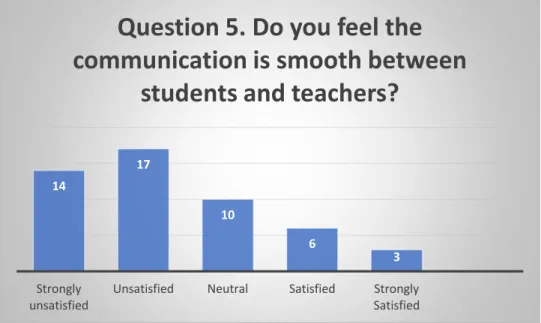The discussion and conclusion section explains the root causes of teachers' and parents' perceptions of distance learning. Therefore, this study may offer important insights into the advantages and disadvantages of distance learning measures for determined students in the Arabian Peninsula and other areas of the world.
INTRODUCTION
- Background
- Problem Definition
- Research Questions and Objectives
- The Rationale for the Study
- Research Methodology
- Research Philosophy
- Research Design
- Ethical Concerns
- Section Summary
What are the academic, social, and emotional consequences of distance learning for special education students? To assess the academic, social, and emotional impacts of distance learning on committed students.
LITERATURE REVIEW
Definition of Key Terms
- Common Learning Environment
- Distance Education
- Students of Determination
- Categorization of Learning Disabilities
- Key Dimensions of Special Education
- Special Education
In general, the emergence of the COVID-19 pandemic removes determined students from the conventional learning environment and moves them into the virtual world. Disadvantaged learners are students with unique disabilities or learning needs that prevent them from gaining opportunities similar to the general population. The UAE Ministry of Education attributes the term determined people to the categories of disabilities and disabilities as described in section 2.1.4 below.
The KHDA (2017) defines exclusive education as "the act of marginalization and discrimination against students with the effect of preventing them from accessing quality educational opportunities in common learning environments with their peers." Fundamentally, exclusive education requires an inherent change in everyday attitudes, behaviors and beliefs. According to the KHDA (2017), equity is defined as "the extent to which individuals can benefit from education and training in terms of opportunities, access, treatment and outcomes." However, it is essential to mention that equity is different from 'equity.' Equity underlines the idea that learners have unique inequalities, therefore they need special support to reach their full academic potential. The term 'Special Education' originated in the 18th century and caused major transformations in the fields of education and psychology.
The UAE Ministry of Education has allocated significant resources to improve the effectiveness of specific educational initiatives.
Special Education Principles in UAE
Conventional special education policy therefore covers education for students with disabilities: from identification to academic assessments. Therefore, the emergence of the COVID-19 virus and the global shift towards distance education has caused major disruptions in the delivery of special education using conventional paradigms. Among the standards mentioned above, the transition to distance learning primarily affected two principles of special education: 1) admissions, participation, and equity, and 2) support systems.
Finally, educators must rely on accurate mechanisms for monitoring special education and ensuring compliance (KHDA, 2017). Due to the shift to distance education, the mentioned components of inclusive special education have been adversely affected. In terms of support systems, the shift to distance learning has affected the way education providers provide support.
With the shift to distance education, teachers and students were forced to abandon conventional systems of special education support.
Special Education Dimensions in Private Schools
- Teaching Support
- Parental Support
For example, interaction with support teachers can improve classroom performance by identifying the specific needs of individual students and modeling co-teaching or team-teaching approaches (KHDA, 2017). If student learning outcomes do not improve between Level 1 and Level 3, Level 3+ support may be introduced. For example, students can be assigned to classrooms based on grades or specific conditions to stimulate creativity and improve productivity (JESS.
In general, the transition from conventional education to distance learning can lead to the loss of vital special education support services. According to JESS Dubai (2021), parents are key stakeholders in their children's education, so they should contribute to establishing transparent and collaborative learning structures. Primarily, parents should have extensive knowledge of their children's medical, developmental, and educational history in order to make optimal decisions about the student's academic needs.
For example, if a child is allocated Level 2 or Level 3 support, the teacher should maintain open communication with the learning institution to respond quickly to their child's changes.
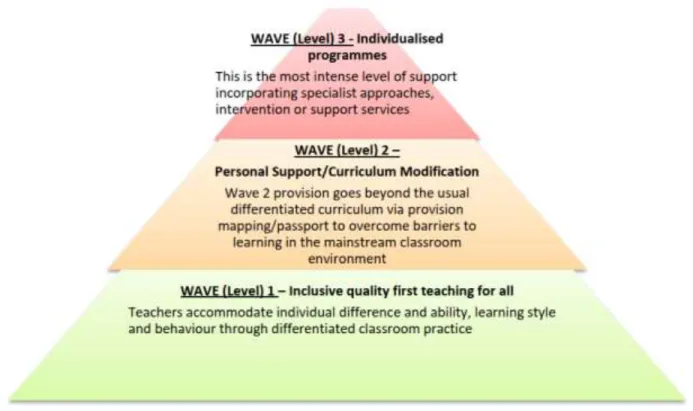
UAE's Transition to Distance Learning
Impact of Distance Learning Paradigms
- Impact of Distance Learning on UAE’s Learning Institutions
- Impact of Distance Learning on Students
- Impact of Distance Learning on Teachers
- Impact of Distance Learning on Parents
Distance learning abolishes geographical barriers to education by allowing students to participate in learning activities from any location (Ashour et al., 2021). Additionally, distance learning can increase student diversity by allowing learning institutions in the UAE to tap into new learner markets (Ashour et al., 2021). Furthermore, the transition to distance learning may have brought challenges with student retention (Martin et al., 2020).
According to Nguyen et al. 2020), the lack of technological infrastructure constitutes a major obstacle to the successful implementation of distance learning programs. Students who were accustomed to this learning environment may have found it difficult to adapt to distance learning (Otaki et al., 2021). According to Amir Rad et al. 2021), instructors found it highly efficient to deliver course content via distance learning platforms.
In addition, the transition to distance learning forced instructors to familiarize themselves with online learning resources, increasing their computer literacy (Khan et al., 2021).
Section Summary
METHODOLOGY
- Location of the Study
- Sampling
- Online Survey Questionnaire
- Interviews
- Data Collection
- Data Analysis
- Ethical Considerations
- Section Summary
The study's target group is parents and teachers in Dubai who look after and educate children with special educational needs. Convenience sampling involves the selection of the nearest participants, or those who happen to be available at a particular time and place (Cohen et al., 2018). In addition, web surveys protect the researcher and participants from the negative effects of the COVID-19 virus.
The results of the web surveys were analyzed using these processes to determine the common patterns within the open and closed questions. The results of the descriptive methods can be used to complement the qualitative results, thereby improving the integrity of the study's conclusions. The main guideline for reasonably informed consent is about a fair explanation of the aims, procedures, purposes, risks and benefits of the research (Cohen et al., 2018).
Overall, the aim of the study was to analyze the effects of distance education on students' determination, academic, social and emotional well-being from the perspectives of teachers and parents.

RESULTS
Parent's Perceptions about Distance Learning
- Parents’ Satisfaction with Distance Learning Platforms
- Impact of Distance Learning on Students’ Social and Emotional Health
- Impact of Distance Learning on Academic Performance
- Impact of Distance Learning on Communication with Teachers and Support Staff
Based on the study, most parents answered that they are not worried about their children's social and emotional health. Perhaps this finding can be attributed to the availability of parental support throughout the distance learning process. Although parents were confident about their children's social and emotional health, most were concerned about the lack of peer relationships.
Therefore, parents were uncertain about the impact of distance learning on their children's socio-emotional health. The findings of academic performance may make it possible to determine the impact of distance learning on student learning outcomes. In comparison, only three parents responded that distance learning gave them the opportunity to improve communication with their children's teachers.
The results thus highlight that distance learning caused serious disruptions in parent-teacher interactions throughout the corona period.
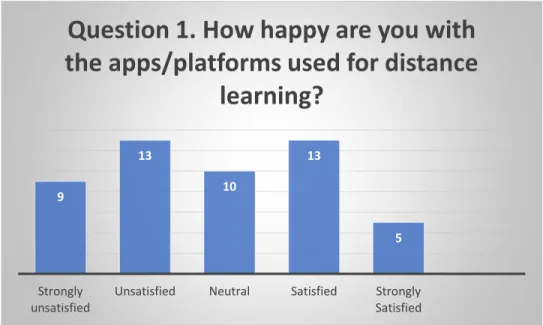
Teachers’ Perceptions about Distance Learning
- Satisfaction with Distance Learning Platforms
- Impact of Distance Learning on Student Engagement
- Impact of Distance Learning on Teaching Support
- Teachers’ Suggestions for Improving Distance Learning
In inclusive classrooms, teachers can use collaboration to improve student engagement, but this activity cannot be achieved using distance learning platforms. Overall, the interviews revealed that distance learning negatively impacted student engagement during the COVID-19 period. Correspondingly, interviews revealed that distance learning prevented most private school teachers from interacting with their students, tracking their progress and providing advice.
For example, the speech language instructor complained that distance learning often prevents him from providing support after official school hours. However, distance learning forced me to stop offering additional spoken languages.” In short, most teachers were concerned that distance learning limits their ability to provide academic, social, and emotional support to their students. Primarily, teachers recommended the introduction of comprehensive orientation programs for both teachers and students.
These programs are essential to explain how distance learning happens and to solve the possible challenges faced during the process.
DISCUSSION
- Academic, Social, and Emotional Impacts of Distance Learning
- Impact of Distance Learning from the Teachers’ and Parents’ Perspectives
- Recommendations for Improving the Efficacy of Distance Learning
- Distance Learning Preparedness Training
- Balancing Synchronous and Asynchronous Learning
- Providing Non-Academic Support
- Implications of the Study’s Findings
The transition to distance learning has caused significant behavioral and emotional changes in committed students. Most of the parents interviewed during the study emphasized that the challenges of distance learning outweigh the future benefits. In addition, parents experienced challenges in providing support to their children during the distance learning process.
These challenges may be exacerbated, given the high frequency of malfunctions in distance learning paradigms (Khan et al., 2021). For this reason, Khan et al. 2021) states that teachers who used distance learning during the coronavirus outbreak recorded a significant improvement in computer literacy. The use of synchronous and asynchronous learning can improve distance learning for determined students.
The findings of the study can be used to clarify changing trends in distance learning practices.
CONCLUSION
Distance learning for students with special needs in primary school during the period of the COVID-19 epidemic. Testing the success of real-time online delivery channel adopted by higher education institutions in the United Arab Emirates during the Covid-19 pandemic. Parents' views of their children's online learning in the UAE context during the COVID-19 pandemic.
Special education for students with autism during the COVID-19 pandemic: "Every day brings new challenges". Introducing the 4Ps model for transition to distance education: A convergent mixed methods study conducted during the COVID-19 pandemic. The impact of COVID-19 on mental health: Psychosocial conditions for students with and without special educational needs.
The experiences, challenges and acceptance of e-learning as an educational tool during the COVID-19 pandemic among university medical staff.
Parent’s Online Survey
How satisfied are you with your child/children's peer relationships as a result of physical and social distancing. To what level do you agree that your child/children always worry about exams and tests. How capable do you think you are to support your child/children's learning at home.
If you participate in distance learning, how often do you meet with your teachers individually?
Teacher’s Interview Guide
How satisfied are you with your students' peer relationships due to physical and social distance?
